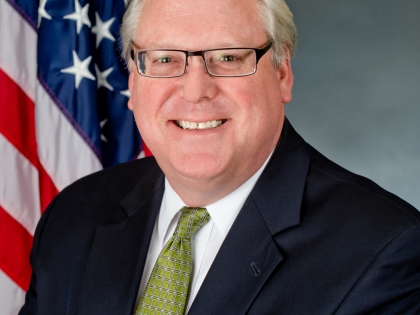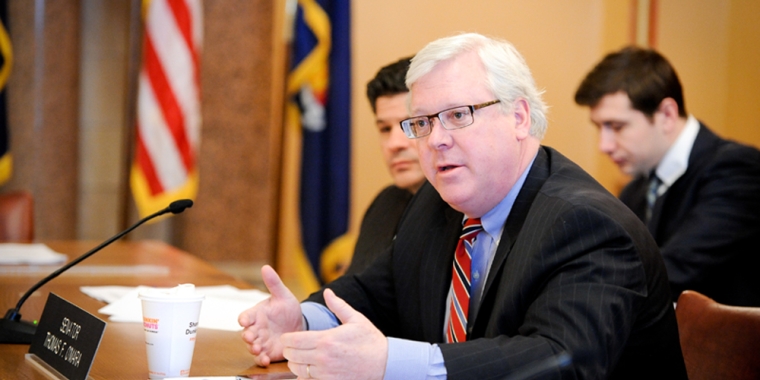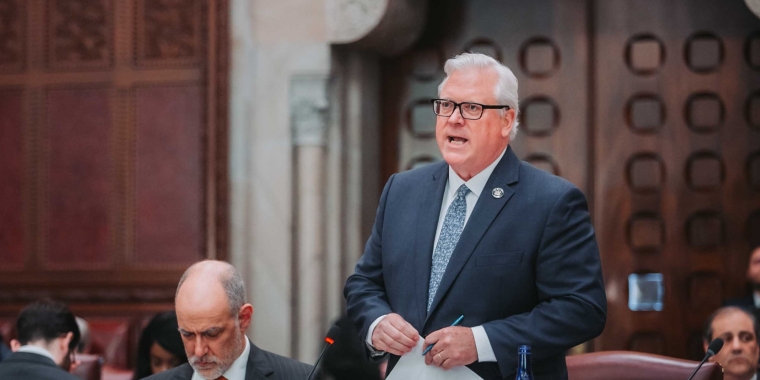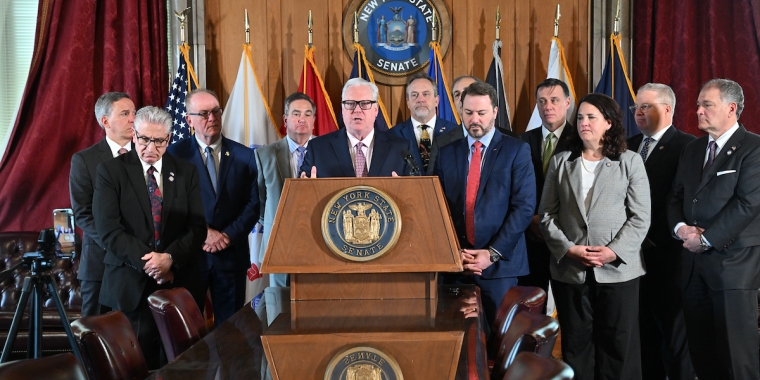
Senate Task Force on Workforce Development holding public forum today ~ Watch live beginning at Noon ~ O'Mara calls task force key part of ongoing efforts to revitalize Upstate economy

Albany, N.Y., May 13—State Senator Tom O’Mara (R,C-Big Flats), a member on the Senate Task Force on Workforce Development, said that the task force will conduct a public forum in Albany today.
Today’s hearing is scheduled to begin at Noon in Hearing Room A of the Legislative Office Building. A live webcast will be available at: http://www.nysenate.gov/live_today
O’Mara said the work of the new task force, which Senate leaders created earlier this year, is vital to the ongoing, overall effort to revitalize the economy of Upstate New York.
“Addressing the range of issues involving workforce development is vital to the overall effort to make the Upstate New York economy more attractive to manufacturers, industries and other employers. Are we doing enough in New York State to develop and encourage this type of a workforce development action plan?” said O’Mara. “This new Senate task force hopes to answer that question and many others. We’re looking to provide a more focused picture of how New York’s trying to address the challenge and what we should be doing more effectively.”
O’Mara said that the task force on Workforce Development will examine the state’s existing job training programs and seek to develop new strategies to strengthen employee readiness in ways that better meet the needs of existing private-sector employers and potentially attract new ones.
At today’s hearing in Albany, experts from workforce groups, labor and business organizations, government agencies, and higher education institutions will offer testimony on a range of topics including:
-- the state of the New York economy and sectors of the economy that need trained, skilled workers, today and in the future;
-- how to best address the crisis of dislocated workers and get them back into the workforce; and
-- developing a better process to connect people who are willing to be trained with available jobs.
O’Mara has pointed to the new CCC welding center in Elmira as a good model of how, for example, local colleges can work together with local businesses and industries to develop the most effective, locally based job training and workforce development strategies. The state Labor Department has identified welding as a high-demand occupation in the Southern Tier that could see up to 5 percent growth over the next several years.
“It’s a perfect example, I believe, of a type of a locally based workforce development model and investment that the Senate will seek to encourage, enhance and expand across the board,” said O’Mara. “It’s a common sense challenge in some respects. We need jobs to employ our workers, but that goes hand in hand with taking steps to ensure that we have the workers to attract the jobs and industries.”
The Democrat and Chronicle in Rochester reported early last year how 23,000 jobs in Monroe County in 2013 were unfilled, including many that remained persistently open because of the lack of a “middle skilled” workforce in the region qualified for health care, tech, manufacturing and other skilled labor, like welding and mechanics.
According to the U.S. Bureau of Labor Statistics, there are 5 million job openings available nationwide as of January 2015. Despite a decrease in the unemployment rate, many of these jobs are likely to continue to go unfilled due to an ongoing skills gap and an aging workforce.
The new Senate task force plans to solicit input from leaders in business, education, state and local governments, O’Mara said, as well as other workforce experts to develop a better process to connect workers with regional employment needs.
Specific issues the task force will examine include: existing barriers and incentives for institutions and businesses to assist students and existing employees in acquiring new skills; state education policies that could maximize opportunities for high school and college students to obtain industry certifications and take career-themed courses for high-demand jobs; accessibility to information about regional and statewide workforce trends to ensure job training programs targeted to specific skills; job training resources available to unemployed and under-employed New Yorkers; and identifying opportunities for additional collaboration between the education and business sectors.



